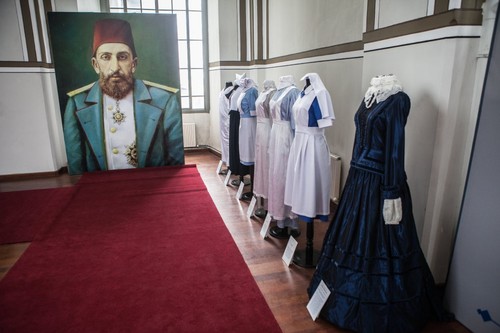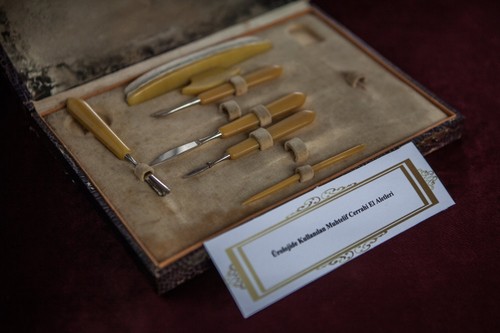© Turkuvaz Haberleşme ve Yayıncılık 2025
The Mekteb-i Tıbbiye-i Şahane (Imperial School of Medicine) built during the reign of Ottoman Sultan Abdulhamid II in Istanbul (1903) was the first medical school established by the Ottomans. The historic building, which has been used by different institutions for over a century, was converted to the University of Health Sciences two years ago and thus resumed its former mission. It is currently hosting the Mekteb-i Tıbbiye-i Şahane exhibition in the rectorate building where important objects representing the history of medical science are on display. In the exhibition, there are sections displaying the medical history from the Ottoman period to the present. When you visit the exhibition and experience its historic atmosphere, you take a trip into the past and have the chance to observe medical breakthroughs that occurred in Turkish history. The exhibition is divided into two parts: in the first part, there are photographs of the brave people who provided health services during the Turkish War of Independence, as well as prescriptions written by doctors during the war, notes, bills of health and other documents, as well as the instruments used in medicine in the 1950s such as surgical hand tools, field first aid kits, microscopes, otoscope devices, chemistry laboratory equipment, measuring glasses, sample collection tubes and ampules.

Many personal documents have been donated to the archives of the university for the exhibition. The documents and photographs of the doctors and paramedics who studied in the historical building during that time are also displayed in the exhibition. The document entitled "Military and Medical Graphics of the War of Independence" ("İstiklâl Harbi'nin vuku ât-ı harbiyye ve sıhhiye grafikleri") is a book prepared by doctors and paramedics in color, and sheds light on the history of medicine. It includes information on martyrs or captives and soldiers wounded in battle. Visitors display a great interest in this document. Other Ottoman medical books also draw the attention of visitors. Ayşe Kayakurdu, head of the Central Library of the University of Health Sciences, said that books published for use in lessons at the Mekteb-i Tıbbiye-i Şahane printing press include various books on preventive medicine, general medicine, animal health and plants. Documents exhibited from the archives of teachers who taught at the medical school such as the Physician Miralay Hilmi Efendi are also worth seeing. Among the Ottoman archive documents, the institutional documents from Mekteb-i Tıbbiye-i Şahane also offer anecdotes to visitors.
The second part of the exhibition is devoted to the profession of nursing. The Hilal-i Ahmer Association (the modern-day Turkish Red Crescent) founded by Besim Ömer Akalın served in this building as well. Safiye Hüseyin Elbi (1881-1964), one of the first nurses who graduated from the nursing school opened in 1911 for women in Istanbul, was a nurse who cared for the wounded soldiers at the Battle of Gallipoli (1915-1916). Through her service and outstanding effort, she was awarded national and international awards of appreciation, including the Florence Nightingale Medal and the Red Striped War Medal.

Talking about her memories of war in a heart-wrenching and emotional interview she gave after the Gallipoli campaign, Nurse Elbi said, "I saw hundreds of injured died in front of me, almost all of them died deliriously saying the same word, "Mother." There were wounded members of various nations on the boat. Germans, Australians, British soldiers that we took from the front lines, as well as our own casualties. ...They were saying a single word deliriously in their own language - Mother!"
The nursing uniform of Nurse Elbi, one of our first nurses, is also on display at the exhibition, as well as the nursing uniforms of nurses from different countries such as the U.K., Canada, France and Germany. Many nursing uniforms from the Ottoman Empire up to the recent period were recreated by examining historical photographs.
As you know, Florence Nightingale (1820-1910), also known as the Lady with the Lamb, who provided care for the soldiers wounded during the Crimean War (1854-1856) in the Üsküdar Selimiye barracks, was a pioneer of scientific developments in the field of nursing on a global scale. Her nursing uniform is also one of the most noteworthy pieces of the exhibition. Now, in modern times, Florence Nightingale's birthday, May 12, is celebrated as International Nurses' Day. The interest in the exhibition is quite intense. In the coming period, there are hopes to open a Health Museum in the scope of a project that will cover the medical and health field. University projects are underway in this regard and I recommend that you go and see it.
